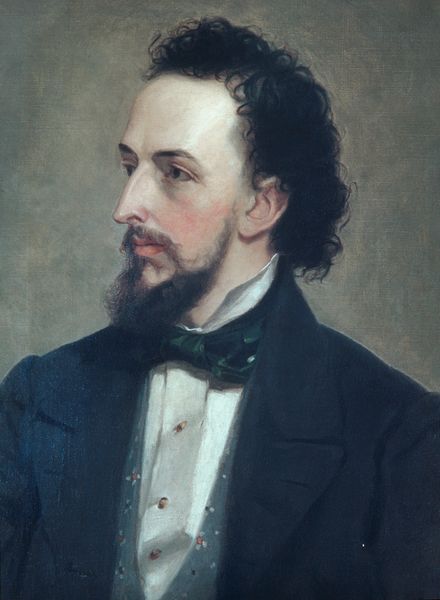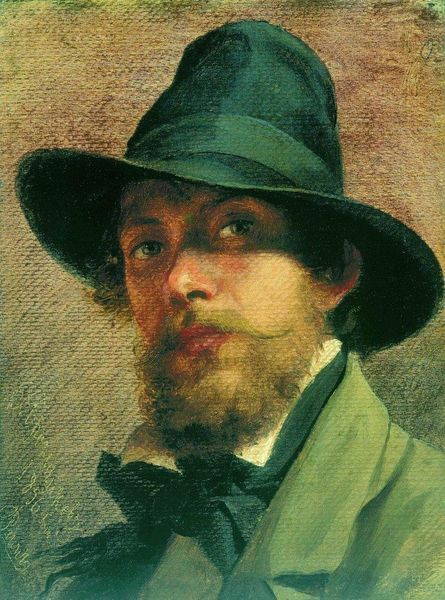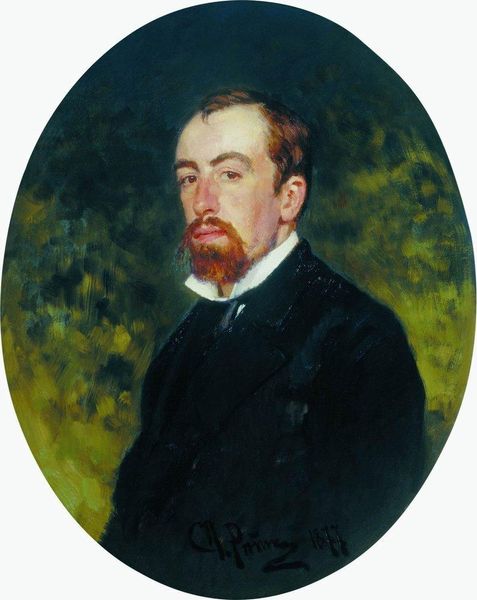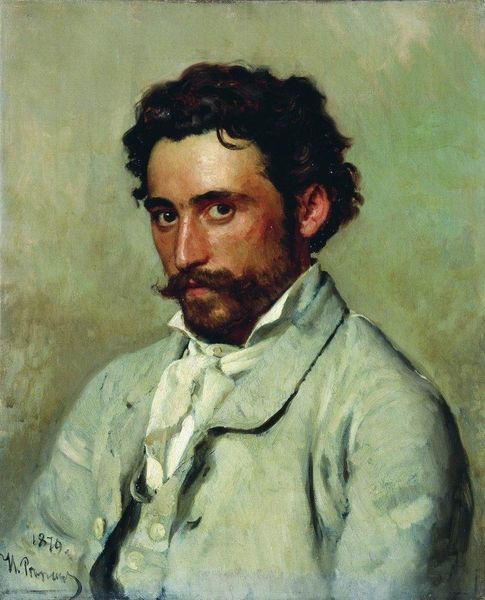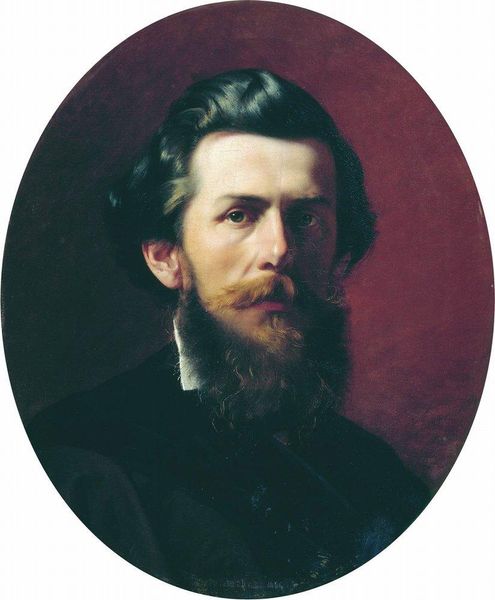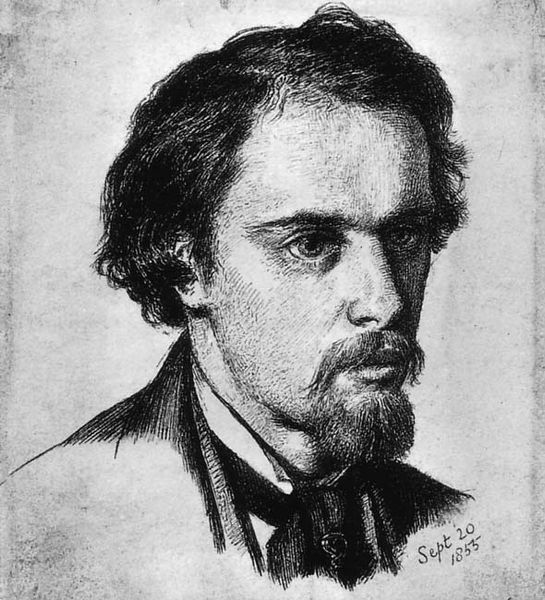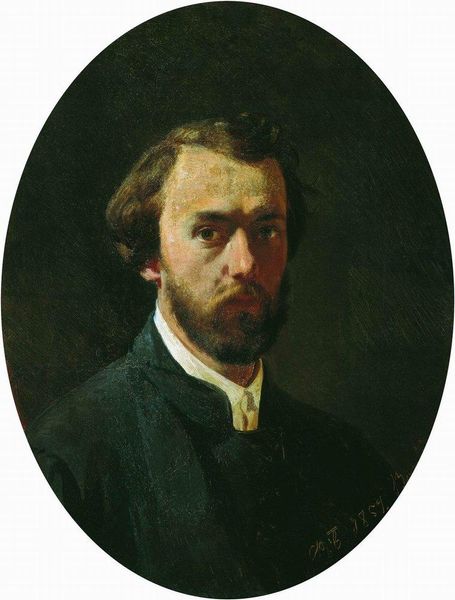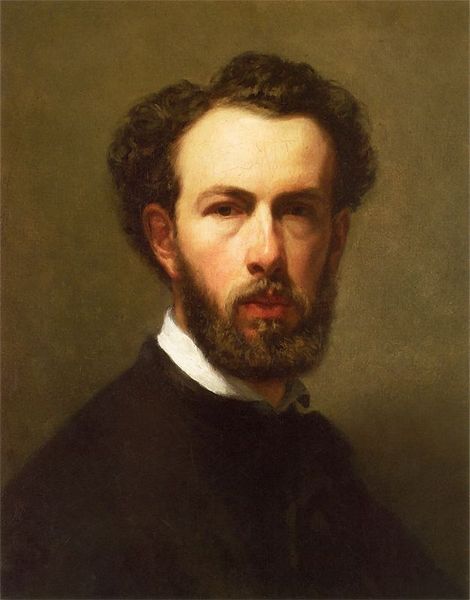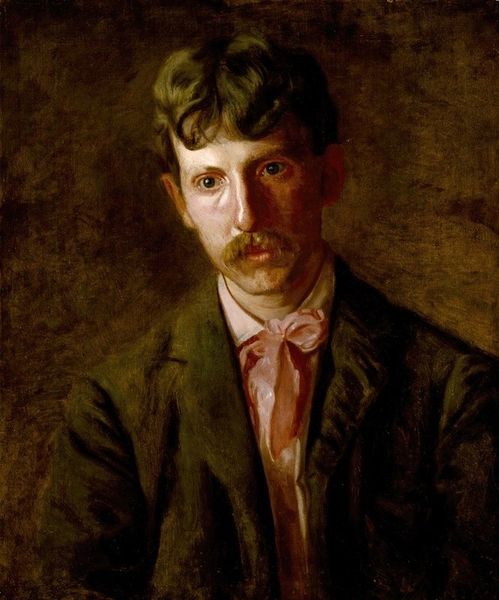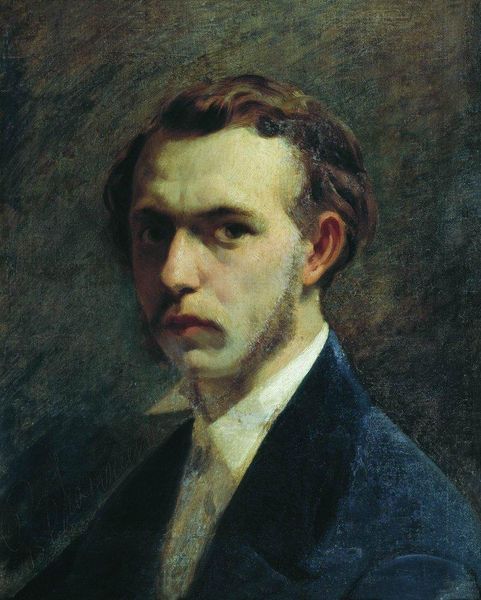
Portrait of the Artist Konstantin Savitsky 1871
0:00
0:00
ivankramskoy
Voronezh Regional Museum of Fine Arts (Kramskoi Museum), Voronezh, Russia
Copyright: Public domain
Curator: Here, we see Ivan Kramskoy's "Portrait of the Artist Konstantin Savitsky," rendered in oil paint in 1871. The artwork currently resides at the Voronezh Regional Museum of Fine Arts in Russia. Editor: My initial impression is one of somber intensity. The limited color palette and the subject’s direct gaze create a very intimate, almost confrontational, experience. Curator: The impasto technique used here is really something. Kramskoy’s layering of paint gives a tangible texture to the canvas, particularly in the sitter's hair and beard. You can almost feel the grit and physicality of the materials. Editor: Absolutely, and consider the broader context. Kramskoy and Savitsky were both part of the Peredvizhniki movement, these artists aimed to bring art directly to the people. This portrait underscores a sense of brotherhood. The image circulated broadly, strengthening the movement’s mission. Curator: Yes, the way he constructed form through color and brushstroke also hints at broader shifts in artistic labor at this time, a move away from rigid academic styles toward a more direct and expressive mode of production. The brown and black paint were relatively easy to make, but those shades may not have been cheap to obtain. Editor: True, there's an undeniable realism to the portrait, which also reveals an engagement with intellectual and political discourse. Consider the power of portraiture within the 19th-century Russian art scene. This artwork reflects not just Savitsky, but the social circles that sustained artistic production in that period. Curator: The seemingly simple choice of attire, the bow tie against that somber backdrop, shows even clothing becomes part of the narrative that communicates ideals within the culture. The man must make himself into his job to signal the seriousness of art production. Editor: That’s insightful. Ultimately, understanding art history is crucial to understanding what defines "Russianness" itself during this formative time. This painting becomes part of our ongoing discussions. Curator: Yes, focusing on artistic techniques really grounds my comprehension and connection to how art manifests culturally. The choices an artist makes in handling materials become central to that historical moment.
Comments
No comments
Be the first to comment and join the conversation on the ultimate creative platform.

